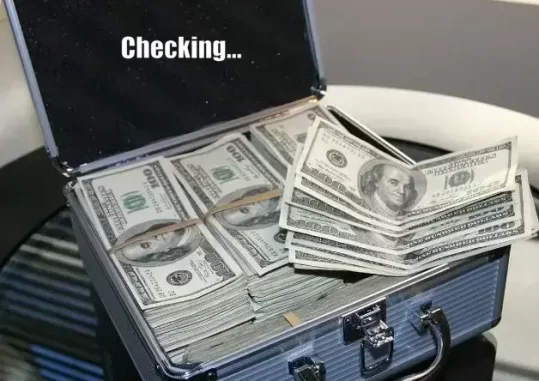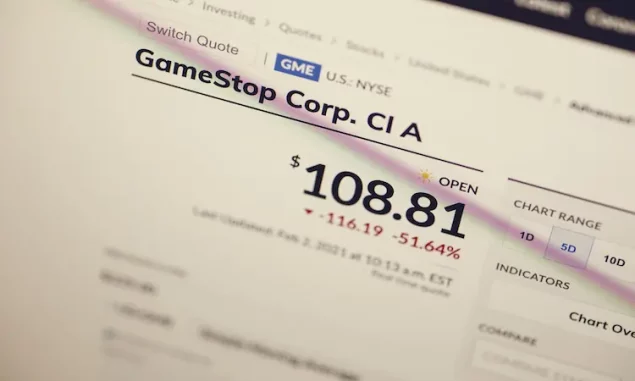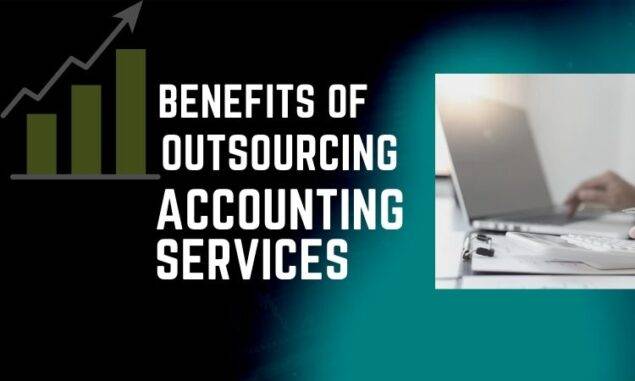Fake money can be found anywhere, but it is always best to be aware of the warning signs. Counterfeiters are looking for opportunities to make quick fortunes by passing fake currency off as real. You will need to know how to tell if money is fake or real.
Fake money is becoming more and more of an issue in the world. According to the U.S. Bureau of Engraving and Printing, around 40% of bills in circulation are counterfeit.
This blog post is going to teach you how to detect fake money by yourself. It’s a skill that will come in handy, especially if you live in the U.S. and use cash as your primary form of payment.
If you don’t believe me, just think about all those times when we’re shopping with our spouses, and they say “I’ll get this one” and then we look at their wallet, and it has some weird-looking money that we’ve never seen before.
What is fake money?
Fake money is any paper currency that has been printed or circulated by counterfeiters. They are imitations of real banknotes meant to fool innocent people.
Counterfeiting is when someone copies money to make it look like the real thing. This can be done by using paper, cotton, or any other type of fabric to print out forged banknotes. The quality of counterfeit money ranges from good to bad.
Using fake money is illegal all over the world, but it can be difficult to differentiate real money from fake money. A counterfeit note will not have the same quality as a real note, but the quality of the replica may be hard to see with the naked eye.
The warning signs of fake money
The United States Treasury Department has a great deal of information on how to spot counterfeit money. They have created a guide that outlines all the ways you can tell if money is fake.
Counterfeit money should never be accepted as real without confirmation from an expert. Money experts aren’t just law enforcement officers; they can also be bank tellers or other financial institutions such as credit card companies and retailers who often handle large amounts of cash.
A counterfeit note will often have imperfections in color or details on paper that differ from a real bill. It might also have lines running through the paper or an uneven texture that is not found on most bills.
Another warning sign of fake money is by feeling its texture. Counterfeiters will often use low-quality paper that doesn’t feel as stiff as real currency. It may also be thinner than normal paper or have a different weight.
Anytime any suspicion arises about whether or not you’re holding counterfeit currency, call your local police station and ask for help!
What are the security features you need to watch out for on a Genuine bill?
Counterfeit money is more prevalent than you might think. It’s not just a problem in countries like China, where counterfeiters are actually printing their own fake currency. Counterfeit money can be found anywhere, and it’s always best to be aware of the security features you need to watch out for.
You can also check for security features like:
- Type of paper used to print the notes,
- watermarks,
- 3D graphics,
- color-shifting ink,
- microprinting,
- embossed printing
- raised ink, and
- embedded plastic threads are all security measures.
How to tell if money is fake in the United States (US)
1. Watermark
Watermark is one of the security features you need to watch out for on genuine banknotes. It will be easy to spot fake currency with it. When looking at a bill’s watermark, bear the following in mind:
- The watermark should only be visible when the bill is held up to the light,
- The watermark should be on the note’s right side.
- The watermark should match the bill’s face correctly.
Note: The bill is most likely a counterfeit if there is no watermark or if the watermark is visible without being checked through a lighting medium
2. Raised Printing
Every genuine banknote has a raised printing feature, which is difficult to replicate counterfeiters. To detect the raised printing feature, run your fingertip down the note carefully to detect the ridges of the raised printing.
The vibration will be noticed on your nail as a result of texture. If no texture is noticed, it means you have a counterfeit bill. Counterfeiters will often use low-quality paper that doesn’t feel as stiff as real currency
3. Counterfeit detector pen
Another way to identify fake money is by using an electronic device called a counterfeit detector pen. This type of pen will often change colors when touched on particular parts of the currency. If you’re not sure if your money is real, just try touching it with the pen in various areas.
If it’s real, then nothing will happen, or it might leave a slight yellow mark that rubs off easily. However, if the pen has turned black or brown then there’s likely something fishy going on with this bill and further inspection should reveal what kind of printing was used for this bill.
4. Serial Numbers
Because the letter that begins a bill’s serial number refers to a certain year, it is counterfeit if the letter does not match the year shown on the bill. The following examples:
- G = 2004A,
- I = 2006,
- L = 2009A,
- J = 2009,
5. Color-shifting Ink
This security feature has been included on all banknotes of $5 or higher since 1996. When you tilt a new series bill back and forth (except for the new $5 bill), the number in the lower right-hand corner Shifts from green to black or from gold to green. That’s one of the major things to look for to discover if your money is genuine.
6. Blurry Printing
If you notice any blurry text, printing, or borders on the banknote is an instant indication of counterfeit money. Authentic bills are printed on die-cut printing plates with exceedingly thin lines, giving them a perfect appearance. A magnifying glass can be used if necessary for this check.
The lines and colors should be very specific so as not to appear as smudges or other abnormalities. Subtle differences can occur from one bill to another due to dye lots or subtle alterations made during production that is illegal for the government printers of the US currencies.
7. Security thread with Microprinting
On the face of a banknote, the security thread is a thin, embedded strip that runs from top to bottom. The security strip might be found on the right or on the left of the bill, it differs according to the denomination.
As an added degree of protection, authentic banknotes feature microprinting in the security thread.
8. The Wise Men Method
You can also detect fake money by comparing it side by side with another bill. For example, you could compare the two $5 bills and see if they look identical in size and shape. It may also be thinner than normal paper or have a different weight.
Also, you can turn your attention back towards where you got it from, this time looking at both sides of their face including eyebrow position and ear shape. Does this person seem trustworthy to you?
In any case, counterfeiters will often times use bleach bills. This means that they take a real bill, clean it up and reprint it to look like a different denomination. You can tell if a bill is bleached by looking at the serial number. If all the numbers are the same (or very close), then it’s likely been reprinted.
Related: Top 3 Investments To Get Your Money Working For You

Counterfeit Detectors
Instead of using methods that seem manual and stressful to detect fake money, It will be better to leverage the technology by using counterfeit detectors in your business and organizations
You can limit the amount of money your business loses due to counterfeits by providing the right tools and training your employees on how to recognize fake money. On a regular basis, many financial institutions restaurants, hotels, and resorts handle a large amount of cash, making them exposed to counterfeit money. Some of them are listed below:
- UV Light
- UV Light Systems
- Currency Counters / Detectors
- Counterfeit Detector Pens
- Magnifying Glasses
Some of these devices are utility in nature. UV lamps, for example, are used to identify counterfeit money and may also be used to verify the authenticity of clients’ identification cards.
What to do if you discovered a bill is a forgery
If you suspect you’ve received counterfeit money, the US Treasury recommends that you take the following steps:
- Don’t put yourself in danger by engaging the passer-by yourself
- Do not give the money back to the passer.
- Offer an excuse to delay the passer, If possible
- Take note of the passer’s description — and the descriptions of their companions — and, if possible, jot down their car license plate numbers. This are useful information for the police.
- Contact the Authorities: your local police station or the Secret Service office near you.
- In the white border area of the suspected counterfeit note, write your initials and the date.
Related: How to Create Multiple Streams of Income exposed!
Do not handle forged currency. Protect it with a protective cover, a plastic bag, or an envelope until it reaches the hands of a known Secret Service Special Agent. You can also send it to your local Secret Service office. Report any suspicions to report to the U.S. Currency Education Program.
Conclusion
There are many ways to detect fake money so don’t feel overwhelmed by it all. Just use your intuition, common sense, and the guidelines provided in this article (How to tell if money is fake) to help you determine if the money you’ve been given is real or not. Stay safe and be vigilant when spending your hard-earned cash!








